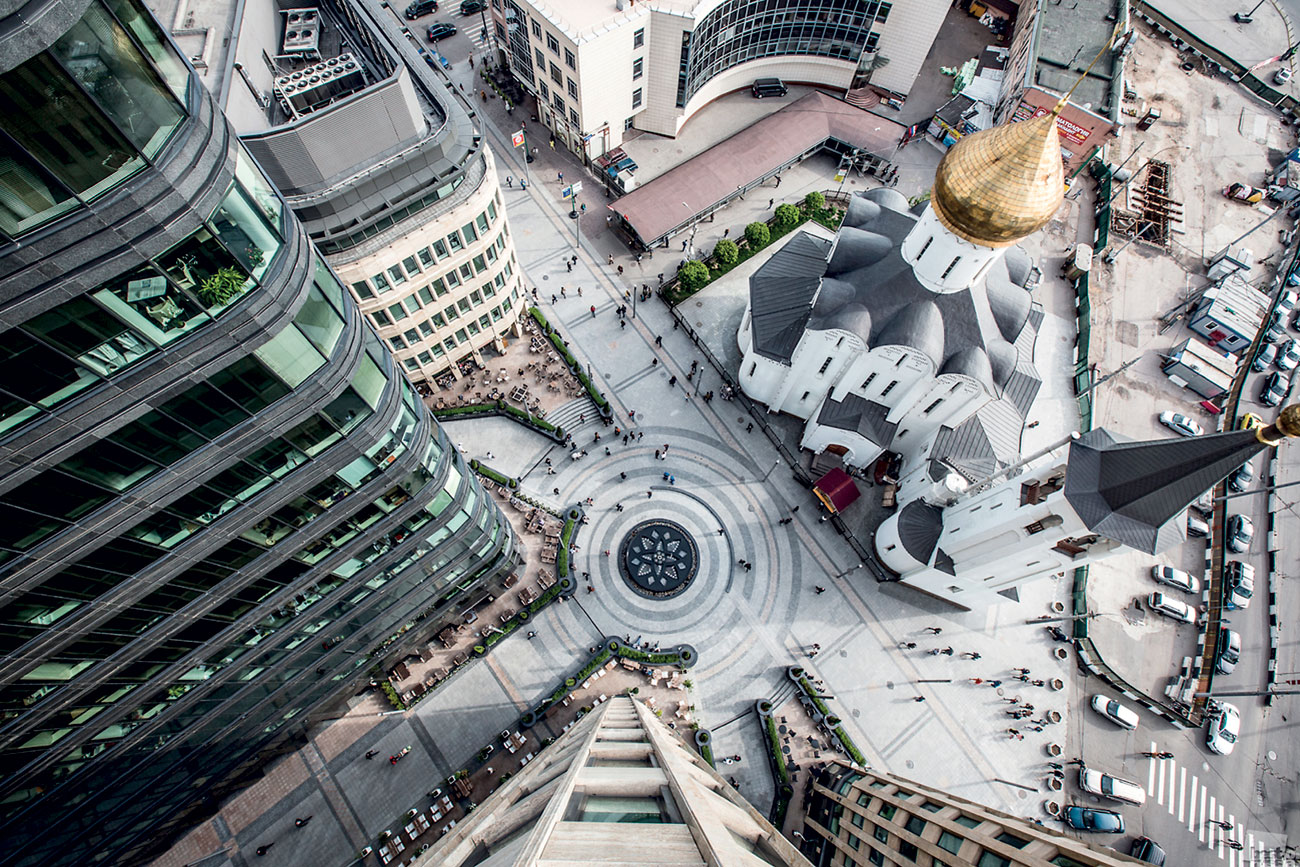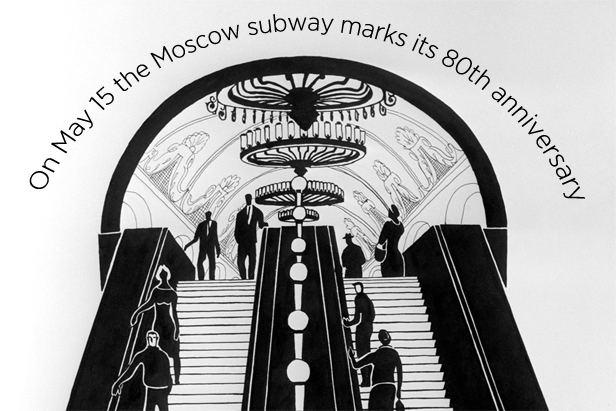Moscow comes in from the cold

White Square in Moscow and the entrance to Belorusskaya metro station.
Best of RussiaTen years ago, the main public space in Moscow was the subway. It not only took us from the edge of the city to the center, it was there, under exquisite gold lamps that we Muscovites waited, walking, crushing our bunches of flowers (or talking about them — what's the best way to hold them? Blossoms up or down?) The subway was even our main museum, which 8 million of us visited every day. The exits of the subway were our main shopping space with the little markets and kiosks clustered around them. We were like rats, living in our burrows, traveling in tunnels.
The number of shopping centers was increasing, but the streets were dying. The large shop windows on the main streets held no attraction. If there was something going on under the stucco frames, it was impossible to tell, unless there was a sloppy handwritten sign proclaiming "We are open." Inside you might find two old women.
Our parks were not that much about amusement. Unless you were a fan of shawarma or kebab – the Russian cuisine of the Perestroika era, or wanted to try your fate on the half-broken Ferris wheel. It wasn't safe to go there after dark – with poorly lit lanes you could easily bump onto mobsters. At least people believed so.
In those days, I led tours around the city, although I preferred to call them walks. I chose routes from the center to the distant suburbs: Sviblovo, Chertanovo, Izmailovo, Belyayevo. My guests and I studied the constructivist workers' quarters, unknown details of Red Square, Moscow river embankments and industrial zones; we never hurried, we went inside the courtyards and talked with the locals: the last native inhabitants of luxury homes in the Art Nouveau style in the city center; old men playing dominoes. If we saw two lanterns suddenly stick out in the midst of new lighting, we might see that this is all that has remained from a 1940s-era dance floor and find an old woman telling us about how she met her husband there in tiresome 1945. We strolled as a large group, 200-300 people, usually on a Saturday morning. Everyone else was sleeping.In 2011, Sergey Kapkov was appointed the director of Gorky Park, and began to reform Moscow's best-known green space. Kapkov was part of the liberal opposition. He cleaned out all the rides and banned capital construction. Soon the whole of Moscow was there. After Gorky Park, there were others. Muscovites went to the park. Some risky dreamers put out chairs and tables along the Garden Ring, which despite the name is actually a 16-lane highway. People sat around sunbathing.
For me, the return of the stroll is the final part of this transformation, this defrosting of Moscow. I call it the urban lifestyle, when the streets have again become a living space. The traffic jams have not disappeared, but the streets have become theatrical, they have prettied up, a new light has appeared. All these changes have shown that the city can be fun for everyone - even oligarchs who left Moscow for their villas 20 years ago, not only returned to the city, but became surprisingly active in its life. This year, for instance, they campaigned to shut restaraunts in the Patriarch's Ponds area after 11 PM.
In the middle of the summer, exactly 10 years ago, we decided to take a tour of the city by bike at night. We called it VeloNoch, bike night in Russian. Ninety-nine people gathered for this first ride. Reporters from three TV channels went with us and filmed this bizarre spectacle: people who opted not to sleep, but rather to learn the city's history. Since then, we have held 10 Velonights in Moscow. The city authorities started helping us, blocking the streets, turning on fountains, providing buses and trolleybuses for artistic projects. It is now difficult to find a summer evening when someone is not running somewhere, not jumping or pedalling — or all of these at once.
In ten years, our city has sufficiently thawed. Moscow has acquired a new identity, the pedestrian, the cyclist, and the flaneur are at its center. It has finally become fashionable to love, observe and be interested in Moscow.
All rights reserved by Rossiyskaya Gazeta.
Subscribe
to our newsletter!
Get the week's best stories straight to your inbox

